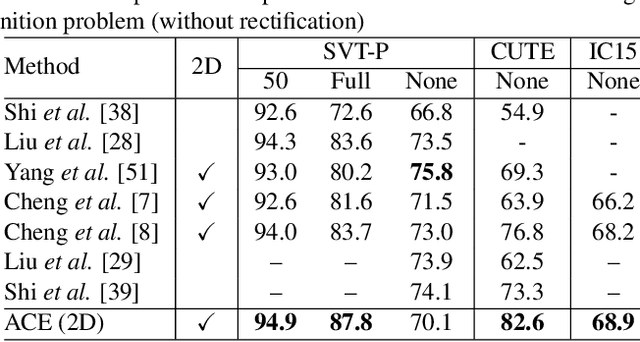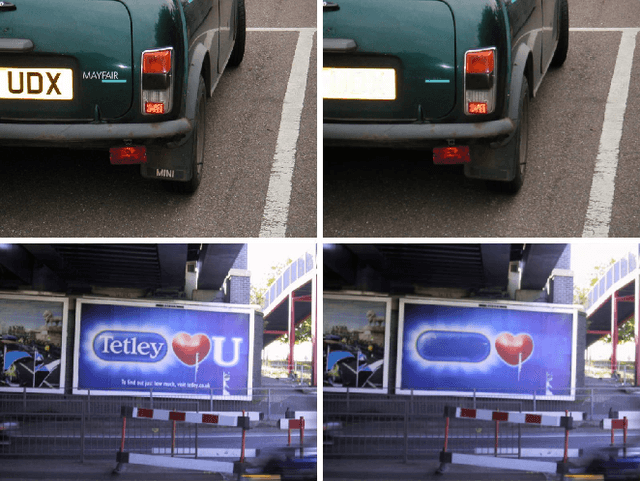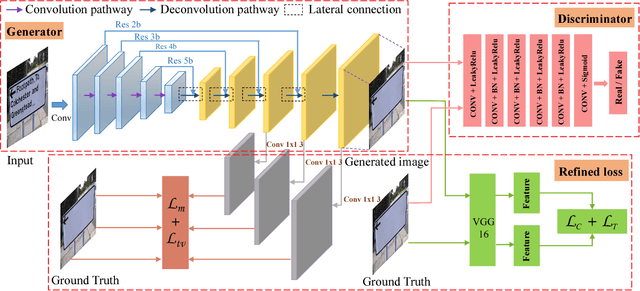Yaoxiong Huang
Aggregation Cross-Entropy for Sequence Recognition
Apr 18, 2019



Abstract:In this paper, we propose a novel method, aggregation cross-entropy (ACE), for sequence recognition from a brand new perspective. The ACE loss function exhibits competitive performance to CTC and the attention mechanism, with much quicker implementation (as it involves only four fundamental formulas), faster inference\back-propagation (approximately O(1) in parallel), less storage requirement (no parameter and negligible runtime memory), and convenient employment (by replacing CTC with ACE). Furthermore, the proposed ACE loss function exhibits two noteworthy properties: (1) it can be directly applied for 2D prediction by flattening the 2D prediction into 1D prediction as the input and (2) it requires only characters and their numbers in the sequence annotation for supervision, which allows it to advance beyond sequence recognition, e.g., counting problem. The code is publicly available at https://github.com/summerlvsong/Aggregation-Cross-Entropy.
EnsNet: Ensconce Text in the Wild
Dec 03, 2018



Abstract:A new method is proposed for removing text from natural images. The challenge is to first accurately localize text on the stroke-level and then replace it with a visually plausible background. Unlike previous methods that require image patches to erase scene text, our method, namely ensconce network (EnsNet), can operate end-to-end on a single image without any prior knowledge. The overall structure is an end-to-end trainable FCN-ResNet-18 network with a conditional generative adversarial network (cGAN). The feature of the former is first enhanced by a novel lateral connection structure and then refined by four carefully designed losses: multiscale regression loss and content loss, which capture the global discrepancy of different level features; texture loss and total variation loss, which primarily target filling the text region and preserving the reality of the background. The latter is a novel local-sensitive GAN, which attentively assesses the local consistency of the text erased regions. Both qualitative and quantitative sensitivity experiments on synthetic images and the ICDAR 2013 dataset demonstrate that each component of the EnsNet is essential to achieve a good performance. Moreover, our EnsNet can significantly outperform previous state-of-the-art methods in terms of all metrics. In addition, a qualitative experiment conducted on the SMBNet dataset further demonstrates that the proposed method can also preform well on general object (such as pedestrians) removal tasks. EnsNet is extremely fast, which can preform at 333 fps on an i5-8600 CPU device.
 Add to Chrome
Add to Chrome Add to Firefox
Add to Firefox Add to Edge
Add to Edge